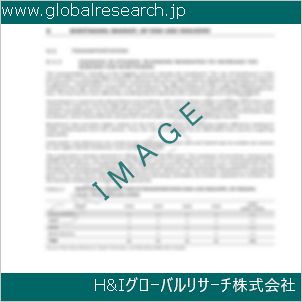1 Connector for PV System Market Overview
1.1 Product Definition
1.2 Connector for PV System Segment by Type
1.2.1 Global Connector for PV System Market Value Growth Rate Analysis by Type 2022 VS 2029
1.2.2 Below 10AWG
1.2.3 10AWG and Above
1.3 Connector for PV System Segment by Application
1.3.1 Global Connector for PV System Market Value Growth Rate Analysis by Application: 2022 VS 2029
1.3.2 PV System
1.3.3 Others
1.4 Global Market Growth Prospects
1.4.1 Global Connector for PV System Production Value Estimates and Forecasts (2018-2029)
1.4.2 Global Connector for PV System Production Capacity Estimates and Forecasts (2018-2029)
1.4.3 Global Connector for PV System Production Estimates and Forecasts (2018-2029)
1.4.4 Global Connector for PV System Market Average Price Estimates and Forecasts (2018-2029)
1.5 Assumptions and Limitations
2 Market Competition by Manufacturers
2.1 Global Connector for PV System Production Market Share by Manufacturers (2018-2023)
2.2 Global Connector for PV System Production Value Market Share by Manufacturers (2018-2023)
2.3 Global Key Players of Connector for PV System, Industry Ranking, 2021 VS 2022 VS 2023
2.4 Global Connector for PV System Market Share by Company Type (Tier 1, Tier 2 and Tier 3)
2.5 Global Connector for PV System Average Price by Manufacturers (2018-2023)
2.6 Global Key Manufacturers of Connector for PV System, Manufacturing Base Distribution and Headquarters
2.7 Global Key Manufacturers of Connector for PV System, Product Offered and Application
2.8 Global Key Manufacturers of Connector for PV System, Date of Enter into This Industry
2.9 Connector for PV System Market Competitive Situation and Trends
2.9.1 Connector for PV System Market Concentration Rate
2.9.2 Global 5 and 10 Largest Connector for PV System Players Market Share by Revenue
2.10 Mergers & Acquisitions, Expansion
3 Connector for PV System Production by Region
3.1 Global Connector for PV System Production Value Estimates and Forecasts by Region: 2018 VS 2022 VS 2029
3.2 Global Connector for PV System Production Value by Region (2018-2029)
3.2.1 Global Connector for PV System Production Value Market Share by Region (2018-2023)
3.2.2 Global Forecasted Production Value of Connector for PV System by Region (2024-2029)
3.3 Global Connector for PV System Production Estimates and Forecasts by Region: 2018 VS 2022 VS 2029
3.4 Global Connector for PV System Production by Region (2018-2029)
3.4.1 Global Connector for PV System Production Market Share by Region (2018-2023)
3.4.2 Global Forecasted Production of Connector for PV System by Region (2024-2029)
3.5 Global Connector for PV System Market Price Analysis by Region (2018-2023)
3.6 Global Connector for PV System Production and Value, Year-over-Year Growth
3.6.1 North America Connector for PV System Production Value Estimates and Forecasts (2018-2029)
3.6.2 Europe Connector for PV System Production Value Estimates and Forecasts (2018-2029)
3.6.3 China Connector for PV System Production Value Estimates and Forecasts (2018-2029)
3.6.4 Japan Connector for PV System Production Value Estimates and Forecasts (2018-2029)
3.6.5 South Korea Connector for PV System Production Value Estimates and Forecasts (2018-2029)
4 Connector for PV System Consumption by Region
4.1 Global Connector for PV System Consumption Estimates and Forecasts by Region: 2018 VS 2022 VS 2029
4.2 Global Connector for PV System Consumption by Region (2018-2029)
4.2.1 Global Connector for PV System Consumption by Region (2018-2023)
4.2.2 Global Connector for PV System Forecasted Consumption by Region (2024-2029)
4.3 North America
4.3.1 North America Connector for PV System Consumption Growth Rate by Country: 2018 VS 2022 VS 2029
4.3.2 North America Connector for PV System Consumption by Country (2018-2029)
4.3.3 United States
4.3.4 Canada
4.4 Europe
4.4.1 Europe Connector for PV System Consumption Growth Rate by Country: 2018 VS 2022 VS 2029
4.4.2 Europe Connector for PV System Consumption by Country (2018-2029)
4.4.3 Germany
4.4.4 France
4.4.5 U.K.
4.4.6 Italy
4.4.7 Russia
4.5 Asia Pacific
4.5.1 Asia Pacific Connector for PV System Consumption Growth Rate by Region: 2018 VS 2022 VS 2029
4.5.2 Asia Pacific Connector for PV System Consumption by Region (2018-2029)
4.5.3 China
4.5.4 Japan
4.5.5 South Korea
4.5.6 China Taiwan
4.5.7 Southeast Asia
4.5.8 India
4.6 Latin America, Middle East & Africa
4.6.1 Latin America, Middle East & Africa Connector for PV System Consumption Growth Rate by Country: 2018 VS 2022 VS 2029
4.6.2 Latin America, Middle East & Africa Connector for PV System Consumption by Country (2018-2029)
4.6.3 Mexico
4.6.4 Brazil
4.6.5 Turkey
5 Segment by Type
5.1 Global Connector for PV System Production by Type (2018-2029)
5.1.1 Global Connector for PV System Production by Type (2018-2023)
5.1.2 Global Connector for PV System Production by Type (2024-2029)
5.1.3 Global Connector for PV System Production Market Share by Type (2018-2029)
5.2 Global Connector for PV System Production Value by Type (2018-2029)
5.2.1 Global Connector for PV System Production Value by Type (2018-2023)
5.2.2 Global Connector for PV System Production Value by Type (2024-2029)
5.2.3 Global Connector for PV System Production Value Market Share by Type (2018-2029)
5.3 Global Connector for PV System Price by Type (2018-2029)
6 Segment by Application
6.1 Global Connector for PV System Production by Application (2018-2029)
6.1.1 Global Connector for PV System Production by Application (2018-2023)
6.1.2 Global Connector for PV System Production by Application (2024-2029)
6.1.3 Global Connector for PV System Production Market Share by Application (2018-2029)
6.2 Global Connector for PV System Production Value by Application (2018-2029)
6.2.1 Global Connector for PV System Production Value by Application (2018-2023)
6.2.2 Global Connector for PV System Production Value by Application (2024-2029)
6.2.3 Global Connector for PV System Production Value Market Share by Application (2018-2029)
6.3 Global Connector for PV System Price by Application (2018-2029)
7 Key Companies Profiled
7.1 STAUBLI
7.1.1 STAUBLI Connector for PV System Corporation Information
7.1.2 STAUBLI Connector for PV System Product Portfolio
7.1.3 STAUBLI Connector for PV System Production, Value, Price and Gross Margin (2018-2023)
7.1.4 STAUBLI Main Business and Markets Served
7.1.5 STAUBLI Recent Developments/Updates
7.2 Amphenol
7.2.1 Amphenol Connector for PV System Corporation Information
7.2.2 Amphenol Connector for PV System Product Portfolio
7.2.3 Amphenol Connector for PV System Production, Value, Price and Gross Margin (2018-2023)
7.2.4 Amphenol Main Business and Markets Served
7.2.5 Amphenol Recent Developments/Updates
7.3 Phoenix Contact
7.3.1 Phoenix Contact Connector for PV System Corporation Information
7.3.2 Phoenix Contact Connector for PV System Product Portfolio
7.3.3 Phoenix Contact Connector for PV System Production, Value, Price and Gross Margin (2018-2023)
7.3.4 Phoenix Contact Main Business and Markets Served
7.3.5 Phoenix Contact Recent Developments/Updates
7.4 Lumberg Holding
7.4.1 Lumberg Holding Connector for PV System Corporation Information
7.4.2 Lumberg Holding Connector for PV System Product Portfolio
7.4.3 Lumberg Holding Connector for PV System Production, Value, Price and Gross Margin (2018-2023)
7.4.4 Lumberg Holding Main Business and Markets Served
7.4.5 Lumberg Holding Recent Developments/Updates
7.5 Weidmueller
7.5.1 Weidmueller Connector for PV System Corporation Information
7.5.2 Weidmueller Connector for PV System Product Portfolio
7.5.3 Weidmueller Connector for PV System Production, Value, Price and Gross Margin (2018-2023)
7.5.4 Weidmueller Main Business and Markets Served
7.5.5 Weidmueller Recent Developments/Updates
7.6 Molex
7.6.1 Molex Connector for PV System Corporation Information
7.6.2 Molex Connector for PV System Product Portfolio
7.6.3 Molex Connector for PV System Production, Value, Price and Gross Margin (2018-2023)
7.6.4 Molex Main Business and Markets Served
7.6.5 Molex Recent Developments/Updates
7.7 TE
7.7.1 TE Connector for PV System Corporation Information
7.7.2 TE Connector for PV System Product Portfolio
7.7.3 TE Connector for PV System Production, Value, Price and Gross Margin (2018-2023)
7.7.4 TE Main Business and Markets Served
7.7.5 TE Recent Developments/Updates
7.8 CNC TECH
7.8.1 CNC TECH Connector for PV System Corporation Information
7.8.2 CNC TECH Connector for PV System Product Portfolio
7.8.3 CNC TECH Connector for PV System Production, Value, Price and Gross Margin (2018-2023)
7.8.4 CNC TECH Main Business and Markets Served
7.7.5 CNC TECH Recent Developments/Updates
7.9 Anhui Zhidian
7.9.1 Anhui Zhidian Connector for PV System Corporation Information
7.9.2 Anhui Zhidian Connector for PV System Product Portfolio
7.9.3 Anhui Zhidian Connector for PV System Production, Value, Price and Gross Margin (2018-2023)
7.9.4 Anhui Zhidian Main Business and Markets Served
7.9.5 Anhui Zhidian Recent Developments/Updates
7.10 Yitong PV Science
7.10.1 Yitong PV Science Connector for PV System Corporation Information
7.10.2 Yitong PV Science Connector for PV System Product Portfolio
7.10.3 Yitong PV Science Connector for PV System Production, Value, Price and Gross Margin (2018-2023)
7.10.4 Yitong PV Science Main Business and Markets Served
7.10.5 Yitong PV Science Recent Developments/Updates
7.11 TONGLIN
7.11.1 TONGLIN Connector for PV System Corporation Information
7.11.2 TONGLIN Connector for PV System Product Portfolio
7.11.3 TONGLIN Connector for PV System Production, Value, Price and Gross Margin (2018-2023)
7.11.4 TONGLIN Main Business and Markets Served
7.11.5 TONGLIN Recent Developments/Updates
7.12 Jiangsu Haitian
7.12.1 Jiangsu Haitian Connector for PV System Corporation Information
7.12.2 Jiangsu Haitian Connector for PV System Product Portfolio
7.12.3 Jiangsu Haitian Connector for PV System Production, Value, Price and Gross Margin (2018-2023)
7.12.4 Jiangsu Haitian Main Business and Markets Served
7.12.5 Jiangsu Haitian Recent Developments/Updates
7.13 QC Solar
7.13.1 QC Solar Connector for PV System Corporation Information
7.13.2 QC Solar Connector for PV System Product Portfolio
7.13.3 QC Solar Connector for PV System Production, Value, Price and Gross Margin (2018-2023)
7.13.4 QC Solar Main Business and Markets Served
7.13.5 QC Solar Recent Developments/Updates
7.14 Renhe Solar
7.14.1 Renhe Solar Connector for PV System Corporation Information
7.14.2 Renhe Solar Connector for PV System Product Portfolio
7.14.3 Renhe Solar Connector for PV System Production, Value, Price and Gross Margin (2018-2023)
7.14.4 Renhe Solar Main Business and Markets Served
7.14.5 Renhe Solar Recent Developments/Updates
8 Industry Chain and Sales Channels Analysis
8.1 Connector for PV System Industry Chain Analysis
8.2 Connector for PV System Key Raw Materials
8.2.1 Key Raw Materials
8.2.2 Raw Materials Key Suppliers
8.3 Connector for PV System Production Mode & Process
8.4 Connector for PV System Sales and Marketing
8.4.1 Connector for PV System Sales Channels
8.4.2 Connector for PV System Distributors
8.5 Connector for PV System Customers
9 Connector for PV System Market Dynamics
9.1 Connector for PV System Industry Trends
9.2 Connector for PV System Market Drivers
9.3 Connector for PV System Market Challenges
9.4 Connector for PV System Market Restraints
10 Research Finding and Conclusion
11 Methodology and Data Source
11.1 Methodology/Research Approach
11.1.1 Research Programs/Design
11.1.2 Market Size Estimation
11.1.3 Market Breakdown and Data Triangulation
11.2 Data Source
11.2.1 Secondary Sources
11.2.2 Primary Sources
11.3 Author List
11.4 Disclaimer
| ※参考情報 太陽光発電システム用コネクタは、太陽光発電システムにおいて非常に重要な役割を果たす部品です。これらのコネクタは、太陽光パネルと他のコンポーネントを接続し、電力の送信やシステム全体の効率を最適化するために必要不可欠です。以下では、太陽光発電システム用コネクタの概念について、定義、特徴、種類、用途、関連技術などを詳しく説明します。 まず、コネクタの定義ですが、一般的には2つ以上の電気回路を接続するための装置を指します。太陽光発電システムにおいては、太陽光パネルから発生した直流電流をインバーターやバッテリーへと移動させるための重要な接点となります。 次に、コネクタの特徴について述べます。太陽光発電システム用コネクタは、耐候性や防水性が求められます。屋外に設置されるため、雨や風、紫外線などにさらされる環境に耐える必要があります。また、高い電圧や電流を扱うため、耐電圧性や耐熱性も重要な要素です。さらに、接続が容易であり、かつ確実なものが求められます。これにより、現場での作業効率が向上し、時間とコストの削減にもつながります。 次に、コネクタの種類について触れます。最も一般的な種類はMC4(Multi-Contact 4mm)コネクタです。これは、太陽光発電業界で広く使用されており、設計がシンプルでありながら、高い性能を発揮します。MC4コネクタは、ユーザーが簡単に接続や切断を行える一方で、脱落防止機能も備えています。また、これらのコネクタは環境に適応するように設計されており、温度や湿度の変化にも強い特徴があります。 他にも、BフレームコネクタやAフレームコネクタなど、さまざまな用途に応じて設計されたコネクタがあります。それぞれのコネクタは異なる特性を持っており、設置環境や要求される性能に応じて選択されます。たとえば、Bフレームコネクタは特定の太陽光パネルに特化した設計が多く、特定の条件において最適な接続を提供します。 用途については、太陽光発電システム内での主要な接続点として、パネルとインバーター、インバーターとバッテリー、さらには配電盤との接続などが挙げられます。効率的な電力伝送を保証するためには、信頼性の高いコネクタが不可欠です。また、メンテナンスや点検を行う際にも、コネクタが簡単にアクセスできる位置に設置されることが多いです。 さらに、関連技術についても触れておきましょう。近年では、スマートコネクタと呼ばれる技術が登場しています。これは、IoT(モノのインターネット)に対応したコネクタで、リアルタイムでのデータ取得や、状態監視が可能です。これにより、システム全体の効率を向上させたり、故障の早期発見が可能となります。 また、エネルギー管理システム(EMS)との連携も重要です。これにより、発電した電力を効果的に活用し、最適なパフォーマンスを引き出すことができます。太陽光発電システム用コネクタは、これらの関連技術と組み合わさることで、将来的なエネルギー管理の最前線で活躍することが期待されています。 最後に、太陽光発電システム用コネクタの選定にあたるポイントをいくつか挙げておきます。まず、コネクタの耐久性や耐環境性を確認することが重要です。特に、設置環境に適した設計がなされているかどうかを確認する必要があります。また、導体の材料や接触抵抗なども選定基準に含まれます。低抵抗のコネクタを選択することで、電力損失を最小限に抑えることができます。 また、メンテナンス性も考慮に入れる必要があります。現場で容易に接続や切断ができる設計であれば、定期的な点検や修理もスムーズに行えます。そして、将来的な拡張性も考慮すべきポイントです。システムの拡張が見込まれる場合、適切なコネクタ選択により、後の改修が容易になるためです。 太陽光発電システム用コネクタは、太陽光発電システムの効率的で信頼性の高い運用を実現するための重要な要素であり、その性能と選定はシステム全体の効率に大きな影響を与えます。これからのエネルギー社会において、ますます重要性が増すこれらのコネクタに注目が集まっています。今後の技術革新により、さらなる進化や改良が期待されており、私たちの生活においてますます欠かせない部品となっていくことでしょう。 |
❖ 免責事項 ❖
http://www.globalresearch.jp/disclaimer


-gr.jpg)









